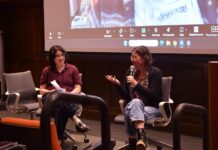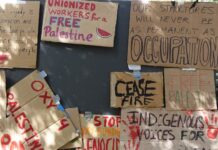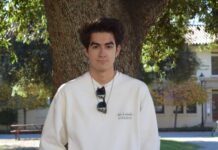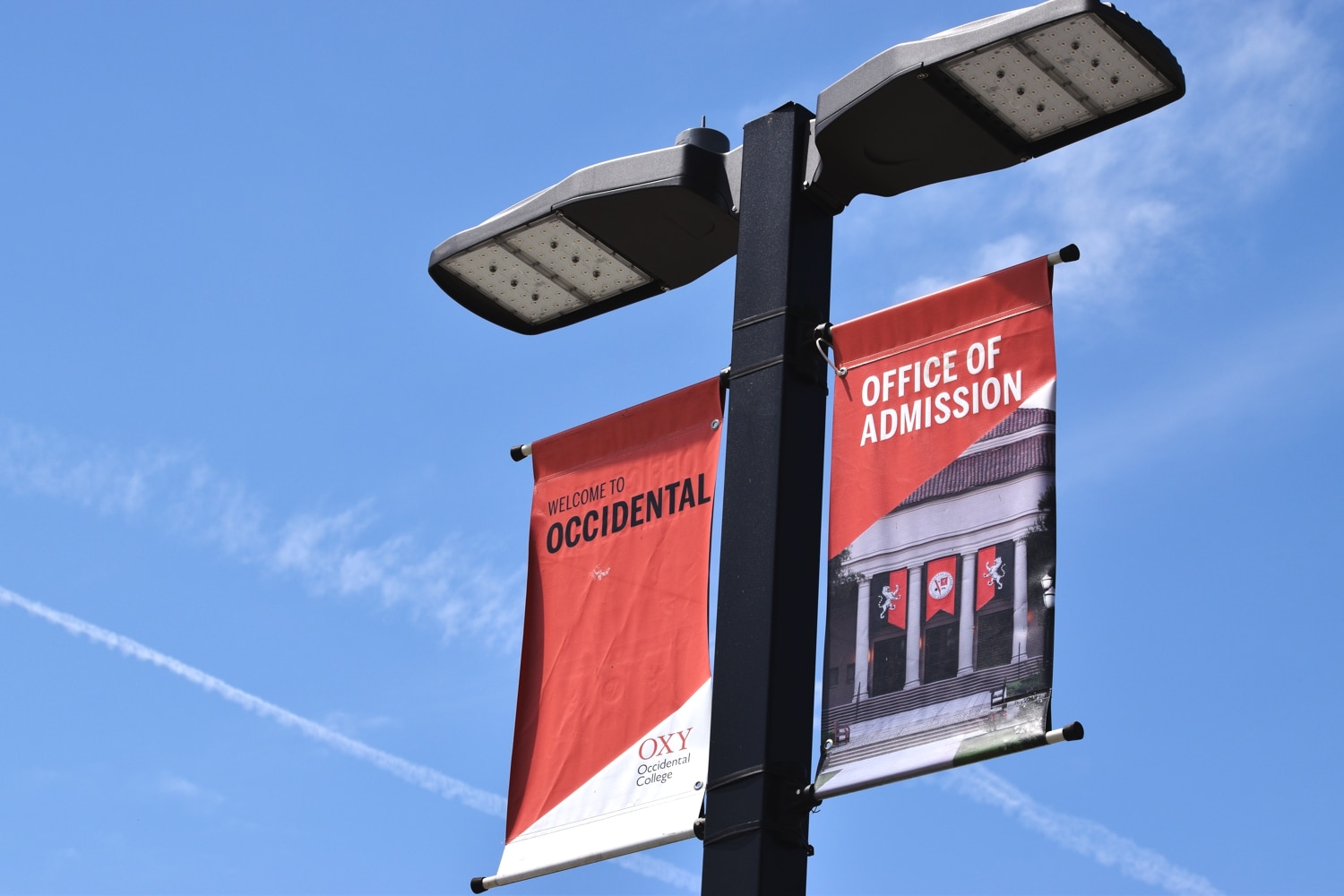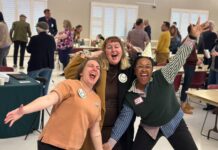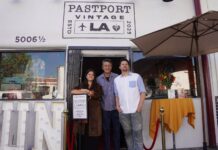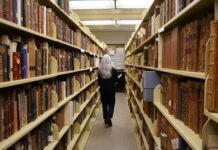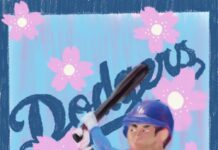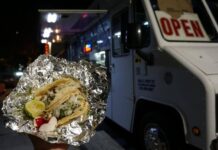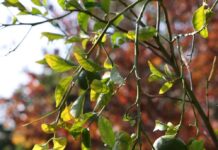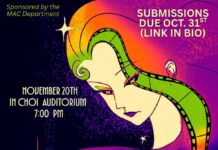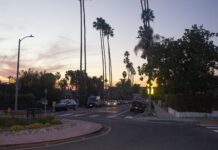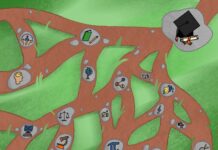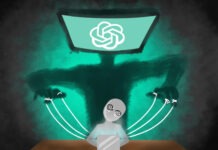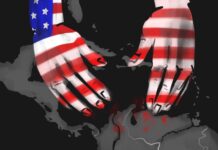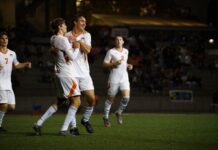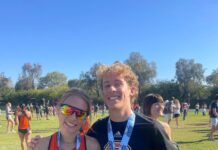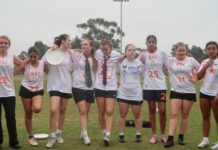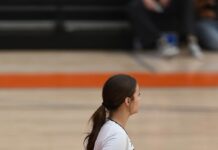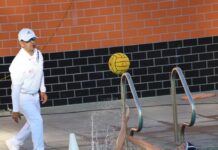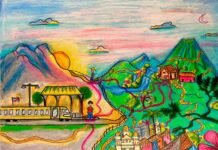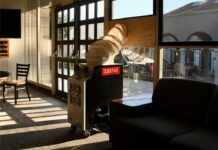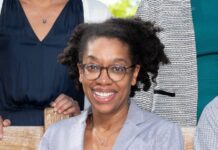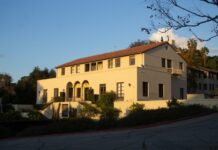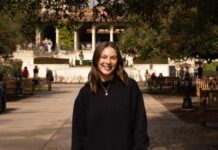Titled “Beneficial Partnerships: From the Deep Ocean to the Rainforest,” Biology Professor Shana Goffredi delivered the annual Sterling Award Lecture Feb. 28 in Choi Auditorium. Goffredi received the Graham L. Sterling Memorial Award in 2023, which recognizes faculty members with distinguished teaching, service and professional achievement records. Written by her colleagues, the letter nominating Goffredi for the award described her as the “deep sea equivalent of a comet: brilliant, rare and unlikely to appear again in our lifetime.”
Goffredi researches symbiosis between bacteria and invertebrates on the seafloor at depths without sunlight. To her knowledge, her lab’s deep-sea focus is unique among liberal arts colleges.
Goffredi’s talk surveyed her research through three vignettes.
“The [vignettes] I wanted to include told a story about how animals are creative in their nutritional strategies and how they interact with bacteria and fungi,” Goffredi said. “I wanted to highlight that cooperation can be a really powerful force, and that it’s not always about competition. We’re always taught that competition and survival of the fittest of course go hand in hand, but sometimes cooperation and survival of the fittest also go hand in hand.”
The first portion of the talk explained anemone and bacteria symbiosis conducted off the coast of Baja California, at the deepest thermal vents in the Pacific Ocean. First discovered by geologists studying plate tectonics in the late 1970s, seafloor ecosystems divorced from sunlight rely on microbes to harness sulfide and other heavy metals released from the vents. These microbes turn inorganic compounds into amino acids that larger organisms — particularly Oasisia*, a red-headed tube worms characteristic of thermal vent communities — use as nutrition. While exploring in a submersible, Goffredi noticed anemones at the thermal vents living adjacent to Oasisia and suspected that the anemones also had a bacterial symbiont. Subsequent lab tests found microbes living in the outer layer of anemones’ tentacles, confirming Goffredi and her team’s discovery of the first chemosynthetic anemone.
Goffredi’s second story focused on methane-oxidizing bacteria and deep-sea spider symbiosis in the Southern California Borderlands, the tectonically active region off Southern California’s coast. With student researcher Bianca Dal Bó (senior), Goffredi found spiders “powered by natural gas.” The spiders have carbon in their bodies derived from methane, which animals cannot process.
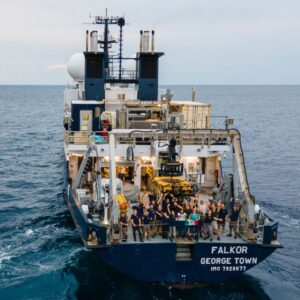
Dal Bó said that she would not be doing the research she is doing now without Goffredi believing in her.
“She lets us take the lead on things, but whenever we’re confused about anything we can come back and ask questions,” Dal Bó said. “She knows how to explain things in a way that’ll make sense when you haven’t been studying this as long as she has, and she’s very patient with us.”
Symbiosis between insects and fungi in the Costa Rican rainforest, a research project Goffredi collaborated on with another student researcher, Ruby Siehl (senior), was the talk’s third subject. Siehl and Goffredi discovered fungal symbionts in 13 insects, with the fungi present in the insects’ eggs. Finding fungi in the eggs shows that the symbiosis translates across generations. Along with the congruence of the insects’ and fungi’s phylogenies, this supports the possibility of coevolution between the symbionts.
According to Siehl, while working in the lab, Goffredi has encouraged her to explore other interests at Occidental as well. When presenting her research at a conference with Dal Bó, Siehl said that Goffredi’s passion made the conference very special.
“Her excitement about what her students are doing gives us so much confidence,” Siehl said. “I can only speak for myself, but it’s so amazing to have somebody who’s that accomplished look at you and be so excited about how you’re talking to people.”
Goffredi said Dal Bó, Siehl and her other student researchers are collaborators and equals in her lab, bringing enthusiasm and ideas. They are a dream come true, she said, and when her student researchers graduate there is a mourning period of sorts.
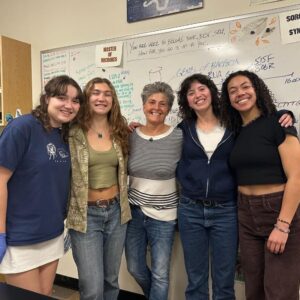
“They all have really different approaches to the science,” Goffredi said. “I feel like we’re a bit of a family.”
Thanking the facilities and administrative crews that support her, Goffredi said although she received the award, she could not have done it without everyone’s help at Occidental.
“When one of us is recognized, really everyone should be recognized,” Goffredi said. “It’s a team effort — it takes a village to do science, so it goes way beyond me. I’m just so grateful that I’ve been able to have a deep-sea program at a small liberal arts college.”
Contact Jimmy Miller jmiller4@oxy.edu
*a previous version of this article incorrectly stated that the tube worms living off the coast of Baja California were Riftia. The worms are Oasisia, a species related to Riftia.
![]()


